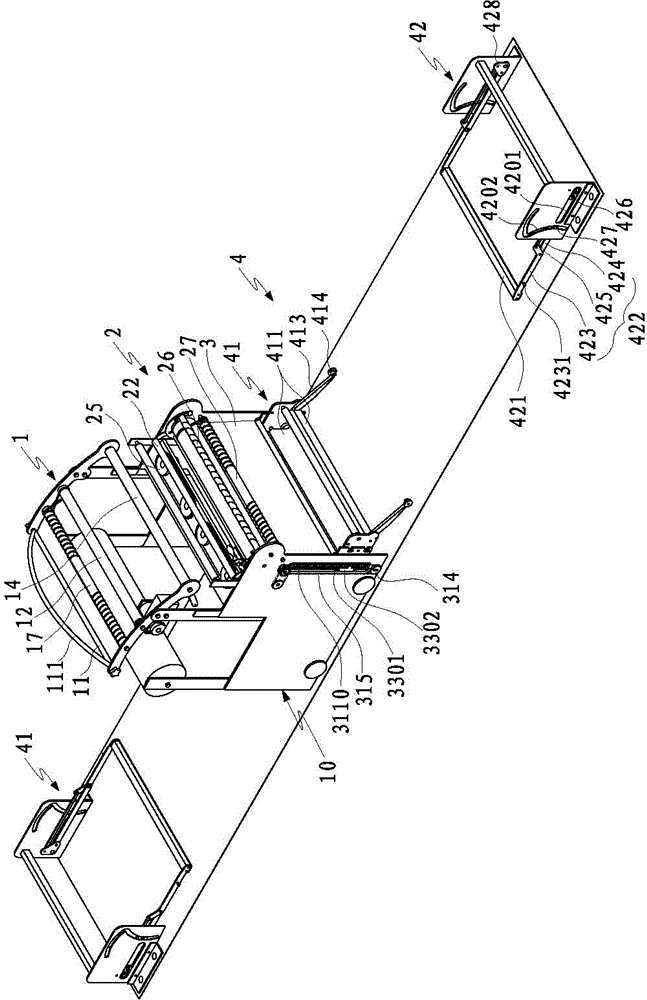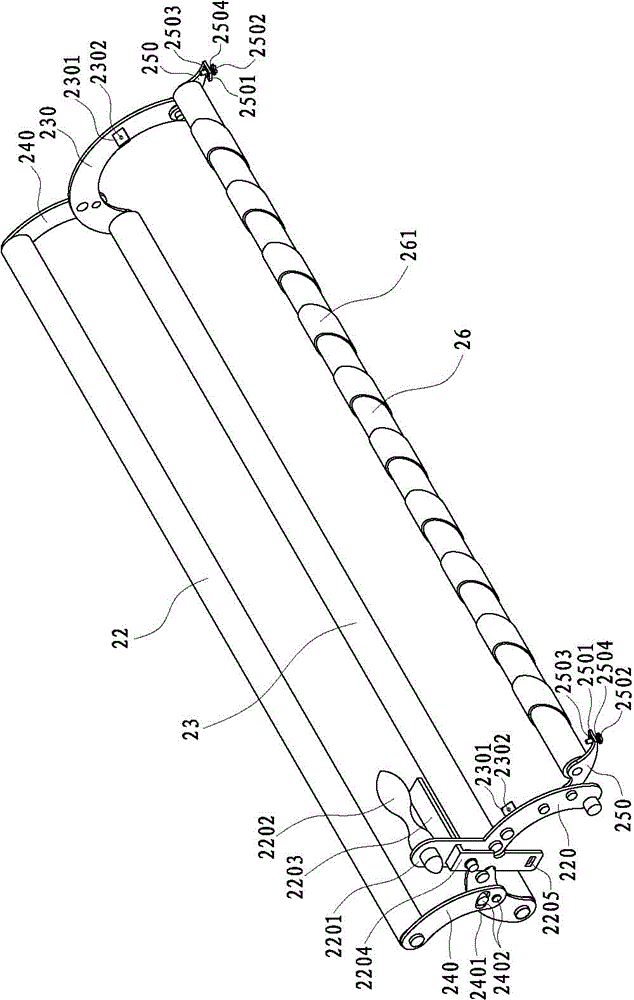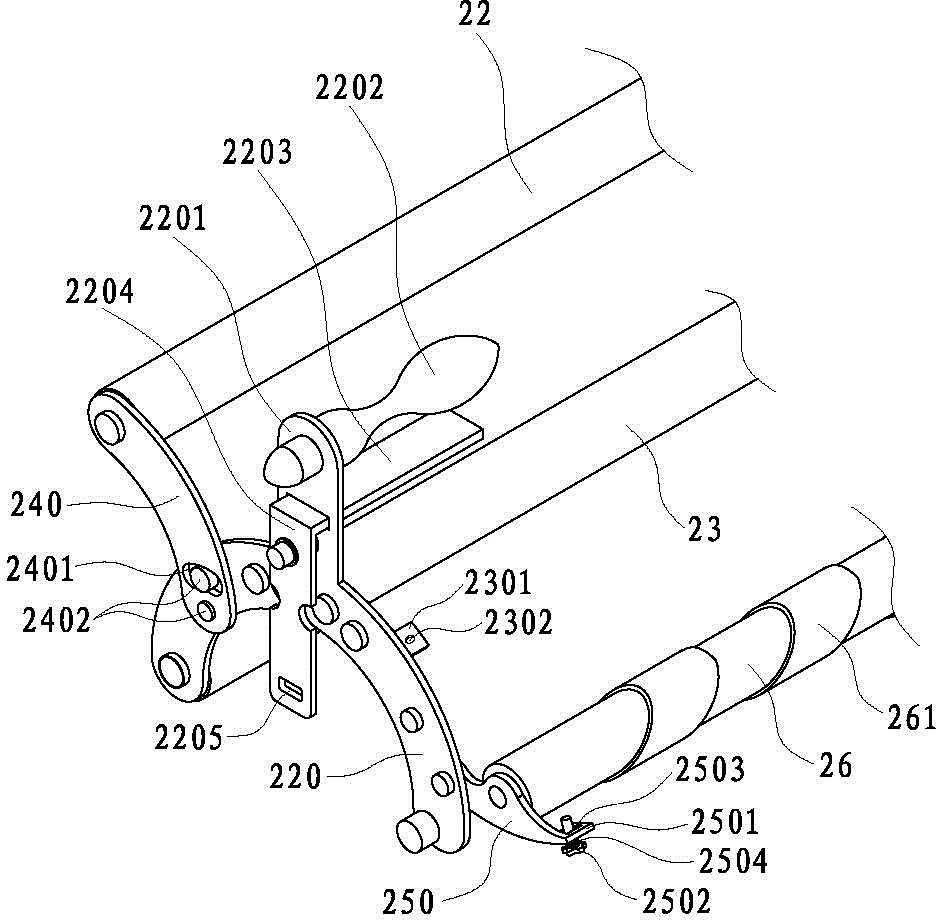Spreading machine
A spreader and frame technology, which is applied in the directions of spreading thin soft materials, thin material handling, transportation and packaging, etc., can solve the problems of inability to arrange the device to spread cloth, unable to apply cloth, and unable to convey cloth in a predetermined direction, etc.
- Summary
- Abstract
- Description
- Claims
- Application Information
AI Technical Summary
Problems solved by technology
Method used
Image
Examples
Embodiment Construction
[0096] In order to further explain the technical solution of the present invention, the present invention will be described in detail below through specific examples.
[0097] see Figure 1 to Figure 27 , the present invention discloses a spreading machine, which includes a frame and a cloth feeding device 1, a spreading device 2 and a spreading device 4 arranged on the frame;
[0098] The cloth feed device 1 includes a first cloth guide roller 11, a first cloth feed roller 12, a tension roller 13 and a first cloth outlet roller 14, and the first cloth guide roller 11, the first cloth feed roller 12 and the first cloth feed roller 14 A cloth outlet roller 14 is arranged parallel to and sequentially on the frame 10, the first cloth feed roller 12 is driven to rotate by a motor 15, and both ends of the tension roller 13 are pivotally connected to the first cloth outlet roller through the pivot arm 31 14 at both ends; the corresponding cloth passes through the first cloth guide ...
PUM
 Login to View More
Login to View More Abstract
Description
Claims
Application Information
 Login to View More
Login to View More - R&D
- Intellectual Property
- Life Sciences
- Materials
- Tech Scout
- Unparalleled Data Quality
- Higher Quality Content
- 60% Fewer Hallucinations
Browse by: Latest US Patents, China's latest patents, Technical Efficacy Thesaurus, Application Domain, Technology Topic, Popular Technical Reports.
© 2025 PatSnap. All rights reserved.Legal|Privacy policy|Modern Slavery Act Transparency Statement|Sitemap|About US| Contact US: help@patsnap.com



